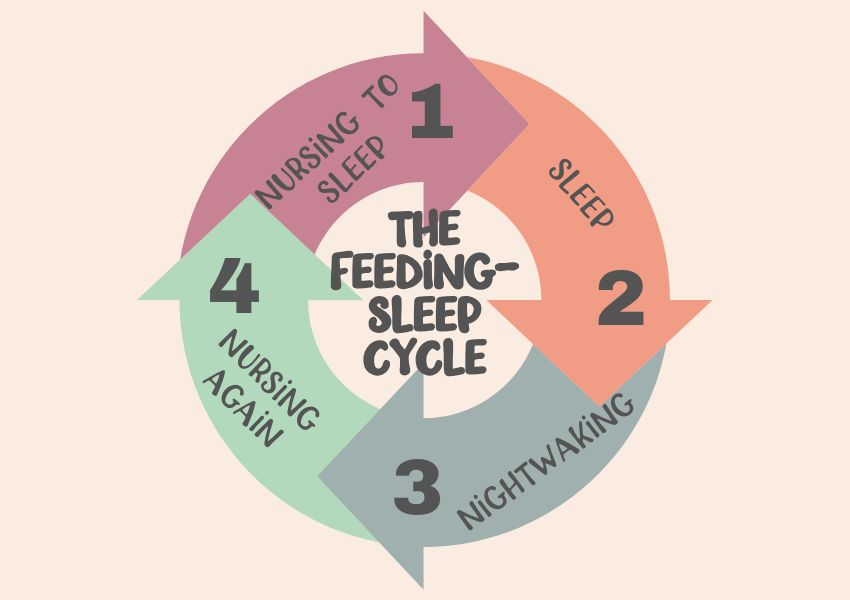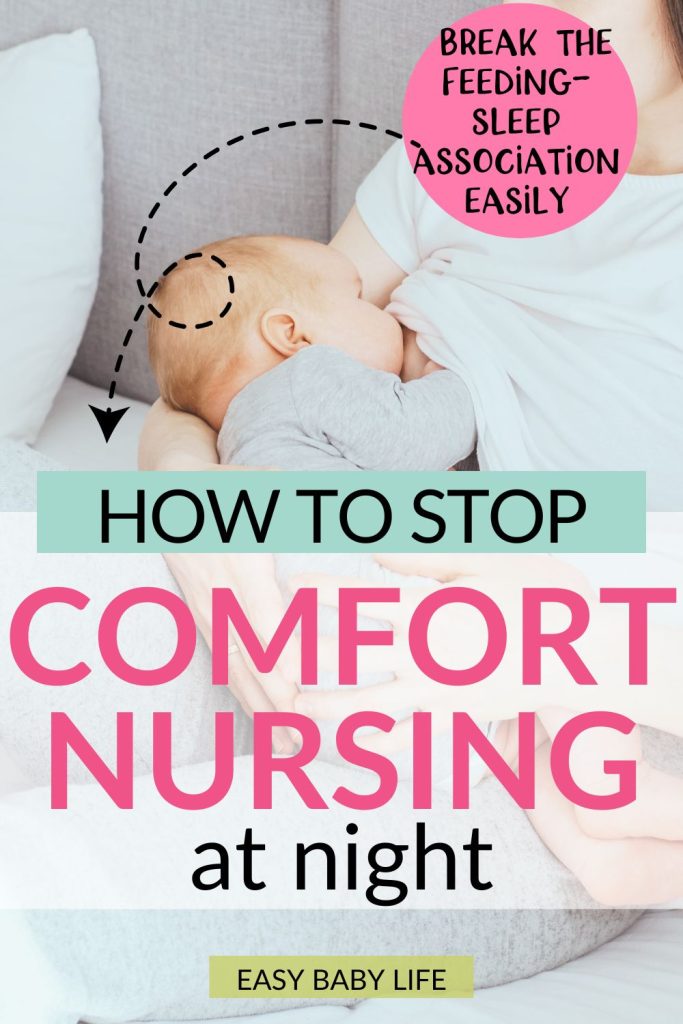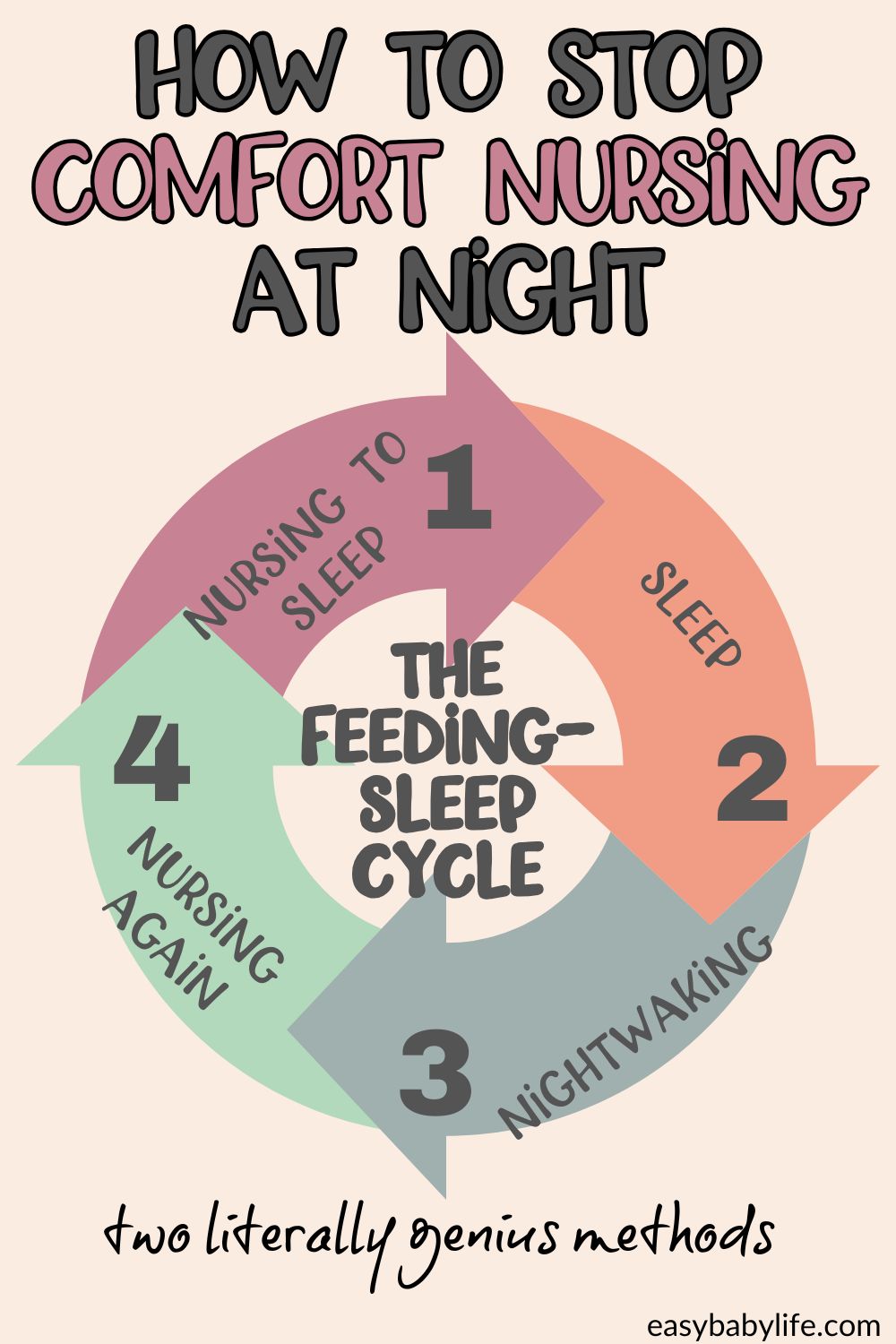

For those who really feel like a human pacifier, similar to the mother who wrote to us under, you’re not alone. Many breastfeeding mothers expertise this part, the place their child doesn’t simply nurse for nourishment but in addition for consolation, soothing, and sleep. Whereas that is solely pure—particularly within the first 4 months when a child’s sucking reflex is powerful—it can be exhausting.
Not all babies accept traditional pacifiers, and a few strongly choose the heat and safety of nursing to go to sleep. However the excellent news? This part doesn’t final ceaselessly, and there are methods to softly (or shortly) break the behavior if you’re prepared.
Beneath, we’ll clarify two strategies: one designed for a faster transition and one that enables for a gentler, extra gradual shift.
Mother’s Query:
How can I cease my child from utilizing my breast as a pacifier to go to sleep? I breastfeed and components feed. Please don’t simply say attempt a pacifier as a result of I do, and he has a tough time placing and maintaining it in his mouth.Thanks, Heidi
Breaking the Feeding-Sleep Affiliation: Why It Issues

One of many essential causes infants nurse for consolation is as a result of they’ve developed a feeding-sleep affiliation. This implies they depend on suckling—not simply to fulfill starvation however as a technique to drift off to sleep. Whereas this isn’t essentially an issue, it could actually turn out to be difficult when it results in frequent night time wakings, brief naps, or a mother who feels fully drained.
For those who’re seeking to change this behavior, the bottom line is to assist your child study to go to sleep in a brand new manner. You are able to do this utilizing one in all two approaches:
The Fast Technique: A Sooner Transition

For fogeys preferring a quicker strategy—particularly if their child is six months or older—this methodology includes making a agency resolution to cease consolation nursing and serving to your child modify shortly.
The way it works:
- Determine to cease permitting suckling for consolation. Set a transparent boundary: nursing is for feeding, not for falling asleep.
- Have one other caregiver take over bedtime. If potential, let your associate or one other trusted caregiver deal with placing your child to sleep, a minimum of initially.
- Change nursing with various soothing strategies. Rocking, patting, utilizing a stroller, providing a lovey, or taking part in white noise may also help your child modify.
- Keep constant. The primary few nights may be tough—your child might protest, cry, or take longer to go to sleep. However with consistency, they’ll modify to the brand new routine, normally inside a couple of days.
Tip: Attempt implementing this methodology over a protracted weekend or when you may have help, so that you’re not dealing with sleep disruptions alone.
Be ready: Some infants take longer to regulate than others. If this strategy feels too harsh or emotionally overwhelming, it’s possible you’ll choose the slower, gentler methodology under.
The Light Technique: A Gradual Transition

For those who choose a extra affected person strategy, you’ll be able to slowly educate your child to go to sleep with out nursing. This methodology takes extra time however tends to contain much less crying and frustration.
The way it works:
- Begin by unlatching earlier than you child is absolutely asleep. When your child is sort of asleep however nonetheless drowsy, gently take away the nipple from their mouth.
- Encourage a closed-mouth reflex. Flippantly press on their chin to maintain their mouth closed, which helps forestall them from rooting for the nipple.
- Repeat as wanted. In case your child fusses, provide the nipple once more briefly, then attempt eradicating it as soon as extra. Hold doing this till they ultimately go to sleep with out suckling.
- Proceed this course of nightly. Over time, your child will study to self-soothe and go to sleep without having to nurse.
Professionals and Cons of the Light Technique
Professionals: Much less abrupt on your child, reduces crying, and promotes self-soothing regularly.
Cons: Can take days and even weeks, requires persistence, and could also be difficult to take care of at night time if you’re exhausted.
Tip: If potential, have a associate or member of the family help you at night time, even when it’s simply to remind you to remain constant.
Bonus Profit: Higher Night time Sleep

As soon as your child not depends upon nursing to go to sleep, it’s possible you’ll discover a constructive facet impact—they get up much less typically at night time! Many infants who break the feeding-sleep affiliation study to hyperlink sleep cycles higher, resulting in longer, extra restful stretches.
That stated, if consolation nursing is working for you and your child, there’s nothing improper with persevering with. Each child and guardian has completely different wants, and there’s no one-size-fits-all strategy to sleep.
Remaining Ideas
Transitioning away from consolation nursing will be an emotional course of for each mother and child. Whether or not you select a fast or gradual strategy, the bottom line is to be constant and select what feels proper for your loved ones.
And keep in mind—this part gained’t final ceaselessly. In the future, your child will go to sleep with out the breast, and it’s possible you’ll even miss these quiet, shut moments.
I want you good luck!
Paula
Mothers, have you ever skilled being a human pacifier? How did you deal with it? Share your expertise within the feedback under!
Extra About Consolation Nursing


Paula Dennholt based Simple Child Life in 2006 and has been a passionate parenting and being pregnant author since then. Her parenting strategy and writing are based mostly on research in cognitive-behavioral fashions and remedy for youngsters and her expertise as a mom and stepmother. Life as a guardian has satisfied her of how essential it’s to place relationships earlier than guidelines. She strongly believes in constructive parenting and a science-based strategy.
Paula cooperates with a team of pediatricians who help in reviewing and writing articles.
Trending Merchandise












